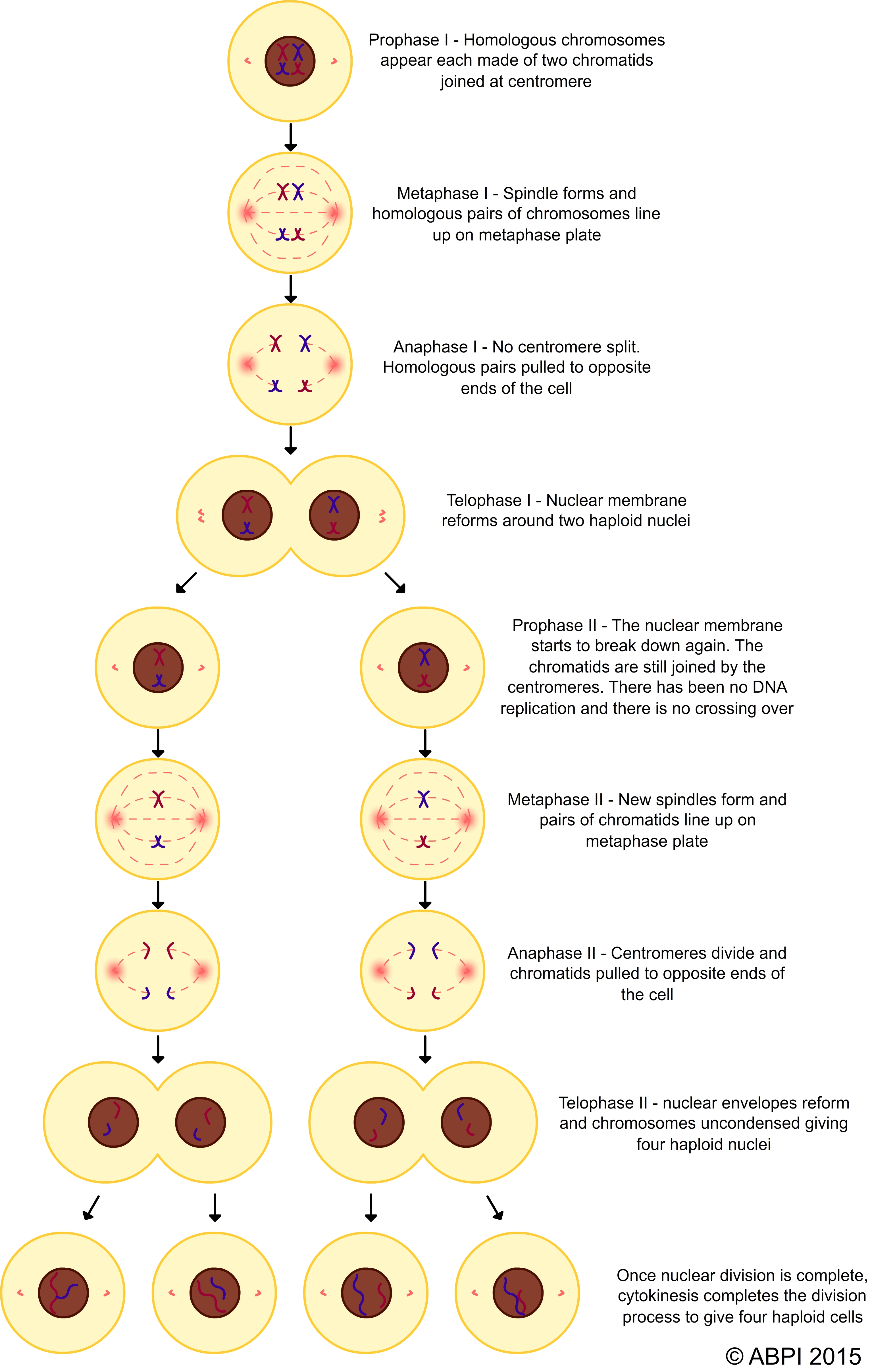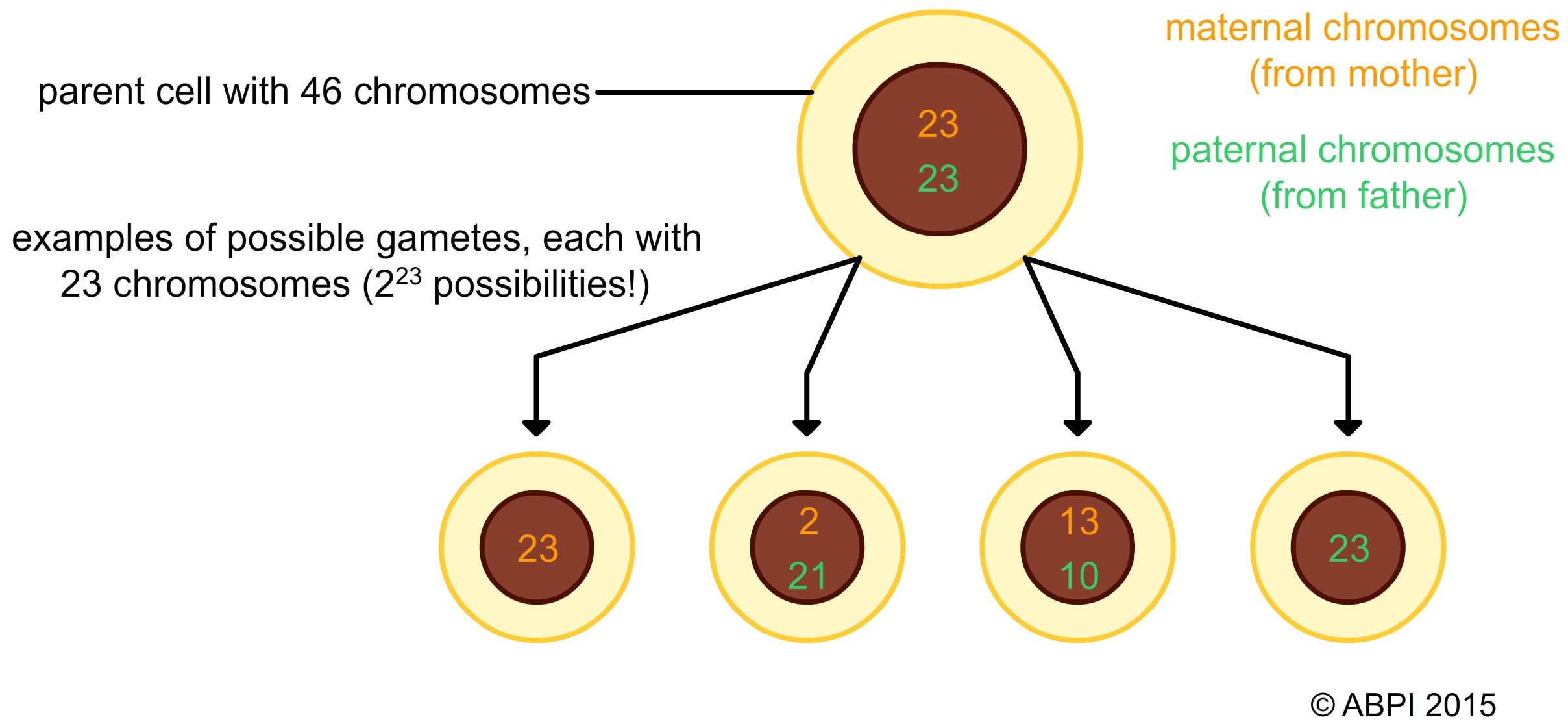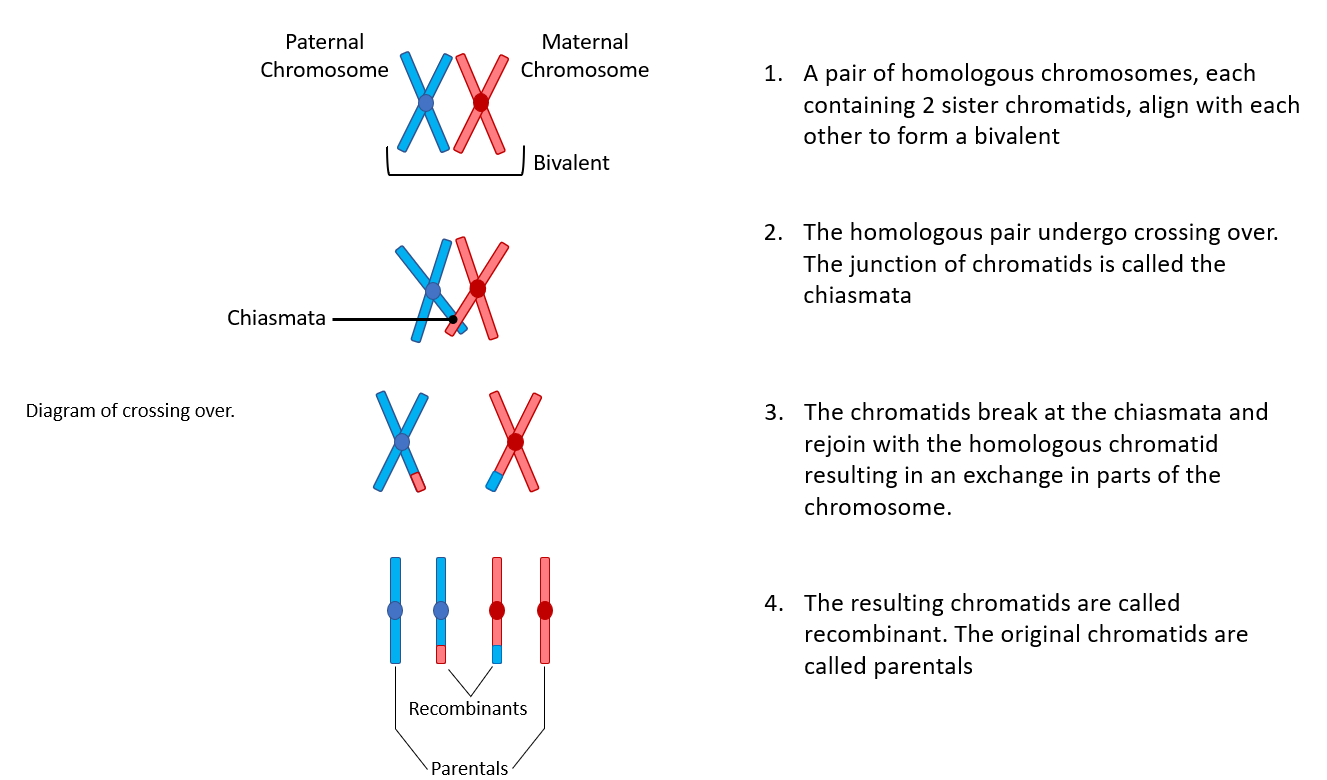This topic takes on average 45 minutes to read.
There are a number of interactive features in this resource:
 Biology
Biology
 Chemistry
Chemistry
 Human biology
Human biology
When the gametes are formed, the chromosome number is halved. To do this, gametes undergo a different kind of cell division called meiosis. As a result of meiosis, the nuclei of the gametes become haploid. This is necessary, so that when they join in fertilisation, the new zygote has a full diploid set of chromosomes. Meiosis only takes place in the sex organs. It is very important biologically – as you will see, it is the basis of the variation that allows species to evolve.

In some aspects meiosis resembles mitosis. In both cellular divisions, the contents of the cell, and in particular the DNA, are replicated while the cell is in interphase. Once the cell has all the materials it needs, it can enter division. However, in other aspects, they are different. When cells divide by mitosis the number of chromosomes in both the daughter cells is the same as in the original parent cell, whereas in meiosis they get halved. For more information about mitosis, revisit page 3 of this topic clicking here.
In meiosis both members of each chromosome pair (the homologous chromosomes) stay close together when they have formed chromatids, making a four-chromatid unit. This is when crossing over or recombination takes place (see below). The centromeres do not split in the first division of meiosis, so pairs of chromatids move to the opposite ends of the cell which may then go into a second division without any further replication of the chromosomes. This division is just like mitosis. Cytokinesis gives four haploid daughter cells, each with half the chromosome number of the original parent cell, and each nucleus is different to the others. These are the cells that develop into gametes.
Once meiosis starts it is a continuous process – you can see this if you run the animation below through without pauses. However, to make it easier to understand, we usually describe it in stages.
Once meiosis in the nucleus is completed, cytokinesis takes place. This gives four haploid cells, each containing a different combination of alleles. These daughter cells will form the gametes through the process of gametogenesis.

Compare this micrograph showing cells on different stages of meiosis with the diagram above to try to match each cell to the corresponding meiosis phase.
The main stages of meiosis. (Photo credit: Petr Reischig Licensed under the Creative Commons Attribution-Share Alike 3.0 Unported license.)
The four haploid daughter cells all contain a different combination of genetic material. This variation is vital to natural selection and survival. There are two main mechanisms that generate this variety:
1. Each cell that forms gametes contains two sets of chromosomes, one originally from the mother and one from the father of the individual. The mixture of these chromosomes that end up in any gamete is completely random. The 23 chromosomes in the gametes can be any mixture, from 23 chromosomes from the mother to all twenty three from the father or any combination – there are 223 or almost eight and a half million possibilities! This is called the independent assortment or random assortment of chromosomes.
2. Crossing over (recombination) takes place during prophase 1 of meiosis, when there are four chromatids lying close together. Large multi-enzyme complexes chop up and rejoin bits of the maternal and paternal chromosomes in a random way. These break points are called chiasmata. They add considerable genetic variation by changing the combination of the alleles on two of the chromatids.

